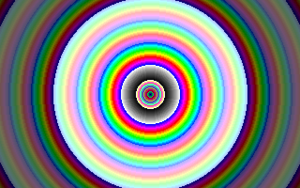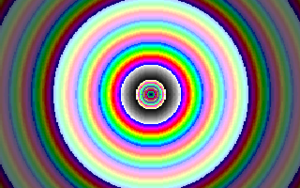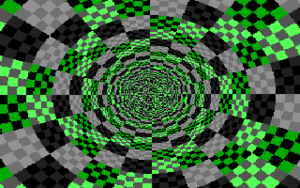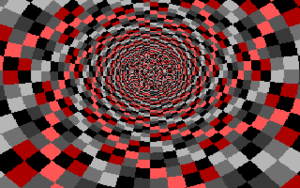Difference between revisions of "Floating-point Opcodes"
m |
(Clarified some wording) |
||
| Line 42: | Line 42: | ||
ret ; quit program</syntaxhighlight> | ret ; quit program</syntaxhighlight> | ||
| − | The usual interaction with the FPU is as follows | + | (Obviously that made the program bigger instead of smaller, but the point of this exercise is to illustrate how to work with the FPU.) The usual interaction with the FPU is as follows: |
| − | * <code>F(N)INIT</code> : | + | * <code>F(N)INIT</code>: Initialize the FPU |
| − | * store | + | * store values in memory location(s) |
* transfer from memory location onto FPU stack | * transfer from memory location onto FPU stack | ||
| − | * actual calculations | + | * do the actual calculations using the FPU (more on this soon) |
| − | * | + | * store result from the FPU stack into memory location(s) |
| − | * get | + | * get result from memory location |
| − | That is a lot of extra code for a single integer addition, but ''' | + | That is a lot of extra code for a single integer addition, but that's a simple example. ''Once more complex floating point operations are involved, it starts to pay off.'' For more advanced FPU operation, let's start from scratch with an unoptimized program which plots the distance of each pixel to the screen center as color, in 49 bytes. |
[[File:Distance to center example.png|thumb|Distance to center]] | [[File:Distance to center example.png|thumb|Distance to center]] | ||
Revision as of 10:07, 18 August 2016
The FPU offers a lot of operations not available to classic x86 CPUs, like SIN, COS, ATAN, SQRT, etc. SIMPLY FPU by Raymond Filiatreault has a compact overview of all FPU commands. Usage and communication with the FPU is quite uncommon and takes a bit to get used to. It's recommended to read the creation of the snippet we want to modify first, this is how the code looks like originally :
cwd ; "clear" DX for perfect alignment
mov al,0x13
X: int 0x10 ; set video mode AND draw pixel
mov ax,cx ; get column in AH
add ax,di ; offset by framecounter <-- REPLACE THIS WITH FPU CODE
xor al,ah ; the famous XOR pattern
and al,32+8 ; a more interesting variation of it
mov ah,0x0C ; set subfunction "set pixel" for int 0x10
loop X ; loop 65536 times
inc di ; increment framecounter
in al,0x60 ; check keyboard ...
dec al ; ... for ESC
jnz X ; rinse and repeat
ret ; quit program
and this is how the code looks if we replace the instruction with FPU code :
cwd ; "clear" DX for perfect alignment
mov al,0x13
X: int 0x10 ; set video mode AND draw pixel
mov ax,cx ; get "column" in AX
fninit ; init FPU first
mov [si],ax ; write first addend to a memory location
fild word [si] ; F(pu) I(nteger) L(oad)D a WORD from memory location to the FPU stack
mov [si],di ; write second addend to a memory location
fiadd word [si] ; Directly add the word in the memory location to the top FPU stack
fist word [si] ; F(pu) I(nteger) ST(ore) the result into a memory location
mov ax,[si] ; Get the word from the memory location into AX
xor al,ah ; the famous XOR pattern
and al,32+8 ; a more interesting variation of it
mov ah,0x0C ; set subfunction "set pixel" for int 0x10
loop X ; loop 65536 times
inc di ; increment framecounter
in al,0x60 ; check keyboard ...
dec al ; ... for ESC
jnz X ; rinse and repeat
ret ; quit program
(Obviously that made the program bigger instead of smaller, but the point of this exercise is to illustrate how to work with the FPU.) The usual interaction with the FPU is as follows:
-
F(N)INIT: Initialize the FPU - store values in memory location(s)
- transfer from memory location onto FPU stack
- do the actual calculations using the FPU (more on this soon)
- store result from the FPU stack into memory location(s)
- get result from memory location
That is a lot of extra code for a single integer addition, but that's a simple example. Once more complex floating point operations are involved, it starts to pay off. For more advanced FPU operation, let's start from scratch with an unoptimized program which plots the distance of each pixel to the screen center as color, in 49 bytes.
push 0a000h
pop es ; get start of video memory in ES
mov al,0x13 ; switch to video mode 13h
int 0x10 ; 320 * 200 in 256 colors
fninit ; -
; it's useful to comment what's on the
; stack after each FPU operation
; to not get lost ;) start is : empty (-)
X:
xor dx,dx ; reset the high word before division
mov bx,320 ; 320 columns
mov ax,di ; get screen pointer in AX
div bx ; construct X,Y from screen pointer into AX,DX
sub ax,100 ; subtract the origin
sub dx,160 ; = (160,100) ... center of 320x200 screen
mov [si],ax ; move X into a memory location
fild word [si] ; X
fmul st0 ; X²
mov [si],dx ; move Y into a memory location
fild word [si] ; Y X²
fmul st0 ; Y² X²
fadd st0,st1 ; Y²+X²
fsqrt ; R
fistp word [si] ; -
mov ax,[si] ; get the result from memory
stosb ; write to screen (DI) and increment DI
jmp short X ; next pixel
A few words on this :
- The FPU registers (st0, st1, ...) are organized as a stack. When you load something to the FPU, everything else will be moved one location further away from the top (implicitly!) Some FPU instructions work only on the top, other allow the explicit parametrization with arbitrary FPU registers.
- Depending on what you do, sometimes
F(N)INITcan be omitted. Real hardware will refuse to work more often than emulators, but it's always worth the try. - Accessing memory (size) efficiently can be a real pain. The safest way is to reference absolute memory locations (f.e
[1234]) but that's two bytes more per instruction than referencing memory with[BX],[SI],[BX+SI],[BP+DI],[BP+SI],[DI]or[BX+DI]. When working with FPU and this classic approach of FPU communication, you have to design your codeflow to have one or some of these locations available. - Accessing the memory is always with regard to the segment register
DSunless you perform segment overrides. When accessing memory with[BP+??]be aware that the memory is accessed with regard to the segment registerSS(see here, at 4.6.2.2 The Register Indirect Addressing Modes) - There are a few conventions which help you identify FPU commands. "i" stands for integer (WORD or DWORD), "p" means "pop stack afterwards", so
FSTmeans just "store" whileFISTPmeans "store as integer, then pop the stack"
Now let's unleash the state of the art sizecoding arsenal onto this, to bring it down to 37 bytes (40 bytes with aspect correction)
push 0a000h - 70 ; modified to center to 160,100
aas ; aspect ratio constant part
pop es ; get start of video memory in ES
mov al,0x13 ; switch to video mode 13h
int 0x10 ; 320 * 200 in 256 colors
X:
mov ax,0xCCCD ; perform the famous...
mul di ; ... Rrrola trick =)
sub dh,[si] ; align vertically
pusha ; push all registers on stack
fild word [bx-8] ; X
fmul st0 ; X²
fild word [bx-9] ; Y X²
fmul dword [bx+si] ; aspect ratio correction
fmul st0 ; Y² X²
fadd st0,st1 ; Y²+X²
fsqrt ; R
fistp dword [bx-5] ; -
popa ; pop all registers from stack
stosb ; write to screen (DI) and increment DI
jmp short X ; next pixel
The resulting image is almost identical to to the former. Let's go through this step by step:
-
push 0a000h - 70
Instead of aligning horizontally with sub dx,160 we can code this implicitly by moving our segment register ten units - that is 10 * 16 = 160 pixels - to the left (see Real Mode Addressing). With further multiple subtraction of 20 units - that is 320 pixels, we can shift the visible screen towards the top, to finetune vertical alignment. As long as this shift is no more than 4 lines ( 65536 / 320 - 200 = 4,8 ) there is no further visual impact.
-
aas
This is the high byte of a constant, placed in a way that [SI] or [BX+SI] resolves to ~1.24 when read as 32bit float. The last byte of segment ES is also of importance. Check yourself with the IEEE 754 Converter
-
mov ax,0xCCCD&mul di
Instead of constructing X and Y from the screen pointer DI with DIV you can get a decent estimation with multiplying the screen pointer with 0xCCCD and read X and Y from the 8bit registers DH (+DL as 16bit value) and DL (+AH as 16bit value). The idea is to interpret DI as a kind of 16 bit float in the range [0,1], from start to end. Multiplying this number in [0,1] with 65536 / 320 = 204,8 results in the row before the comma, and again as a kind of a float, the column after the comma. The representation 0xCCCD is the nearest rounding of 204,8 * 256 ( = 52428,8 ~ 52429 = 0xCCCD). As long as the 16 bit representations are used, there is no precision loss.
-
sub dh,[si]
The instruction at [SI] is push <word> and has the opcode 0x68 which is 104 in decimal. Combined with the fine tuned vertical alignment above ( ~4 lines) this results in (virtually) subtracting 100 for perfect vertical alignment. This is one byte shorter than sub dh,100.
-
pusha / popa
Instead of going the classical way of communicating with the FPU, we push all the registers, read/write values with memory addressing to/from the FPU, then pop all registers again. This works when DS = SS and SP is "close enough" to BX (initially zero and kept that way) to allow [BX+<signed byte>] addressing. It comes with the special benefit of implicit 8bit shifts. One serious drawback is loss of precision, since the registers DL and AH "lose connection" when using PUSHA (see the order of registers : PUSHA/PUSHAD documentation
fild word [bx+<signed byte>]& *fistp dword [bx+<signed byte>]
This is the so called "stack addressing". We assume that BX=0 and SP=0xFFFE at start, so we know where the registers are in memory after pusha (AX at [BX-4], CX at [BX-6] etc.). It's important to realize that we work with signed 16 bit values now, in the full range of [-32768,32767]. That is also why we need DWORD when storing the result : sqrt(x²+y²) exceeds the signed 16bit range for quite some value pairs. Note that there are already implicit 8bit shifts (bx-9,bx-5)
fmul dword [bx+si]
With the "Rrrola" trick above, we have the row number to be 204 at maximum, but also the column can't be greater than 256. This results in a wrong aspect ratio, but it can almost completely be fixed with this two byte instruction (+ one byte for the AAS instruction) : 256 * 1,24 = 317,44 which is quite close to 320. If aspect ratio is of no meaning to the desired effect, this three bytes can be shaved off.
Now let's add some features:
- extract angle as opposed to the distance and combine both
- reverse divide the distance to create the "tunnel" effect
- animate with smooth steps along the distance
- improve on the colors with subselecting from the standard palette
- quit the program on ESC
This results in the following program with a size of 63 bytes :
push 0xa000 - 10 - 3 * 20 ; video base - 3.5 lines
or al, 0x13 ; mode 13h = 320 x 200 in 256 colors
pop es ; get aligned video memory base
int 0x10 ; switch videomode
X:
sub dh, [si] ; vertical alignment
pusha ; push all registers on stack
fild word [bx-9] ; fpustack : x
fild word [bx-8] ; fpustack : y x
fpatan ; fpustack : arc
fst st1 ; fpustack : arc arc
fcos ; fpustack : cos(arc) arc
fimul dword [si] ; fpustack : l*cos(arc) arc
fidiv word [bx-8] ; fpustack : l*cos(arc)/x arc
fiadd word [bp+si] ; fpustack : l*cos(arc)/x+offset arc
fistp dword [bx-7] ; fpustack : arc
fimul word [byte si+val] ; fpustack : scaled_arc
fistp word [bx-5] ; fpustack : -
popa ; pop all registers from stack
xor al, cl ; XOR scaled_arc with distance
and al, 16 + 8 + 2 ; sub selecting palette part
stosb ; writing to screen
mov ax, 0xCCCD ; Performing the famous
mul di ; Rrrola trick
jo X ; next frame check
add word [bp+si], byte 23 ; change offset smoothly
in al, 0x60 ; check for ...
dec ax ; ...ESC key
jnz X ; otherwise continue
ret ; quit program
val: dw 6519 ; n = 160 * 256 / pi / 2 ; 0x1977
Many other tiny tunnel effects have been coded, so it is highly recommended to check out the documented source code of "Constant Evolution" by ryg/Farbrausch and the "Heart shaped tunnel" from Lord Kelvin, both with a size of 64 bytes. While "Constant Evolution" takes a slightly different route than the example here (classic FPU communication, classic X Y construction, sqrt(x²+y²) instead of using fcos+fimul), "Heart shaped tunnel" uses no FPU at all. The takeaways from this example are :
- Loading a constant from the code with some degrees of freedom
fimul dword [si] multiplies with a 32 bit integer dividend for the tunnel effect. The highest byte of this constant points to our code, to the opcode from or al, 0x13. This instruction puts 0x13 into al, and since there a lot of possibilities to achieve this, there is a direct way of changing the appearance of the tunnel with changing this instruction to one of the following : mov al,0x13, add al,0x13, xor al,0x13, adc al,0x13, sbb al,0xED or sub al,0xED. In this special case, the instruction can also be swapped with pop es to gain a further degree of freedom.
- normal loading of a constant which can't be reused as opcode
Although it's the ultimate goal to not even use a single extra byte for constants, sometimes the required sequence simply does not appear in the code. In this case, a constant is needed to convert the angle from the range [-pi,pi] to the color space in a way that no gaps appear while stepping from 359° to 0°. In the last line at val: the value 160 in the comment is 32 * 5 where 5 is number of "spiral arms" the tunnel effect has. The 8bit shift (*256) is to increase precision. It turns out that 16bit precision is enough to get a decent "gap closer" for values obtained by fpatan.
- operating directly on an indirect memory location without offset
The location [bp+si] is used as animation variable, while both participatory registers are kept fixed (the value is 0x0A?? and therefor way above our code). Since we work with 16bit values and the top 8bit are the measurement in pixels, the instruction add word [bp+si], byte 23 allows for sub pixel precision in animation, while occupying 3 bytes of space. Depending on the target hardware, this value 23 can be increased/decreased to achieve faster/smoother animation.
- Optimizing the check for the next frame
Normally, there is a check like test di,di with direct consecutive branch necessary. The used approach allows for direct branching after mul di with jo, since the overflow flag is always but twice triggered for a frame. This saves two bytes, but also requires adjustment of the animation constant, because the animation constant is also added twice. A further benefit is that in one of these two cases, AX is zero which save a further byte on the following ESC check (dec ax instead of dec al )
Now if we abandon all the comfort, alignment, smoothness and convenience, and optimize this straight for size, we end up with a 52 byte version. This does not include the possible exclusion of color tuning (2 bytes), after all the effect is supposed to look at least somewhat appealing ;)
mov al,0x13
int 0x10
X:
or al, [bp+si]
xor al, 0x68
mov dx, 0x79F
pusha
fild word [bx-9] ; x
fild word [bx-8] ; y x
fpatan ; arc
fst st1 ; arc arc
fcos ; cos(arc) arc
fimul dword [si] ; l*cos(arc) arc
fidiv word [bx-8] ; l*cos(arc)/x arc
fistp dword [bx-4] ; arc
fimul word [bx] ; scarc
fistp word [bx-5] ; -
popa
sub ah, [bp+si]
xor al, ah
and al, 16 + 8 + 4
stosb
mov ax, 0xCCCD
mul di
jmp short X-1
to be continued



